Cracking the sales management code
The secret of effective sales management is measuring, managing, and following the right methods. You can learn about all these in the "Cracking the sales management code" book.

Sale is an outcome, not a goal. It is a function of doing numerous things right, starting from the moment you target a potential customer until you sign the deal.
But doing the right thing needs the right direction. “Cracking the Sales Management Code: The secrets to measuring and managing sales performance” book by Jason Jordan & Michelle Vazzana provide the secret sauce to crack this complex problem.
The book provides the practical specifics of sales management in the new era and helps the sales managers to gain greater control over sales performance.
To help you crack your sales management process, we have distilled the main idea espoused in the book for you.
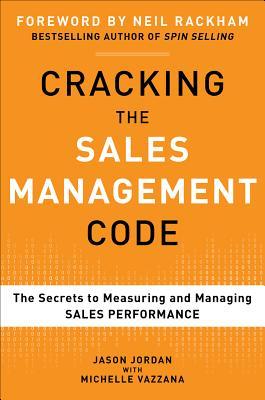
Sales then and now
The author, Jason Jordan, believes that there are three elements required for effective sales management:
- Selection: Recruiting highly-skilled salespeople
- Strategy: Creating an insightful sales plan
- Skills: training salespeople to make effective, persuasive sales calls
But with changing times, it is becoming clear that the modern sales process needs a few more elements to be successful. The modern sales industry requires three M’s:
- Management: Sales team supervision
- Metrics: that align the sales activities with sales goals.
- Methodology: formulating and executing a methodological strategy
The author advocates that sales managers must be trained to identify sales metrics and formulate methodologies. To prove this, he aggregated 306 sales metrics. He further categorised these metrics based on their manageability.
A-O-R Framework
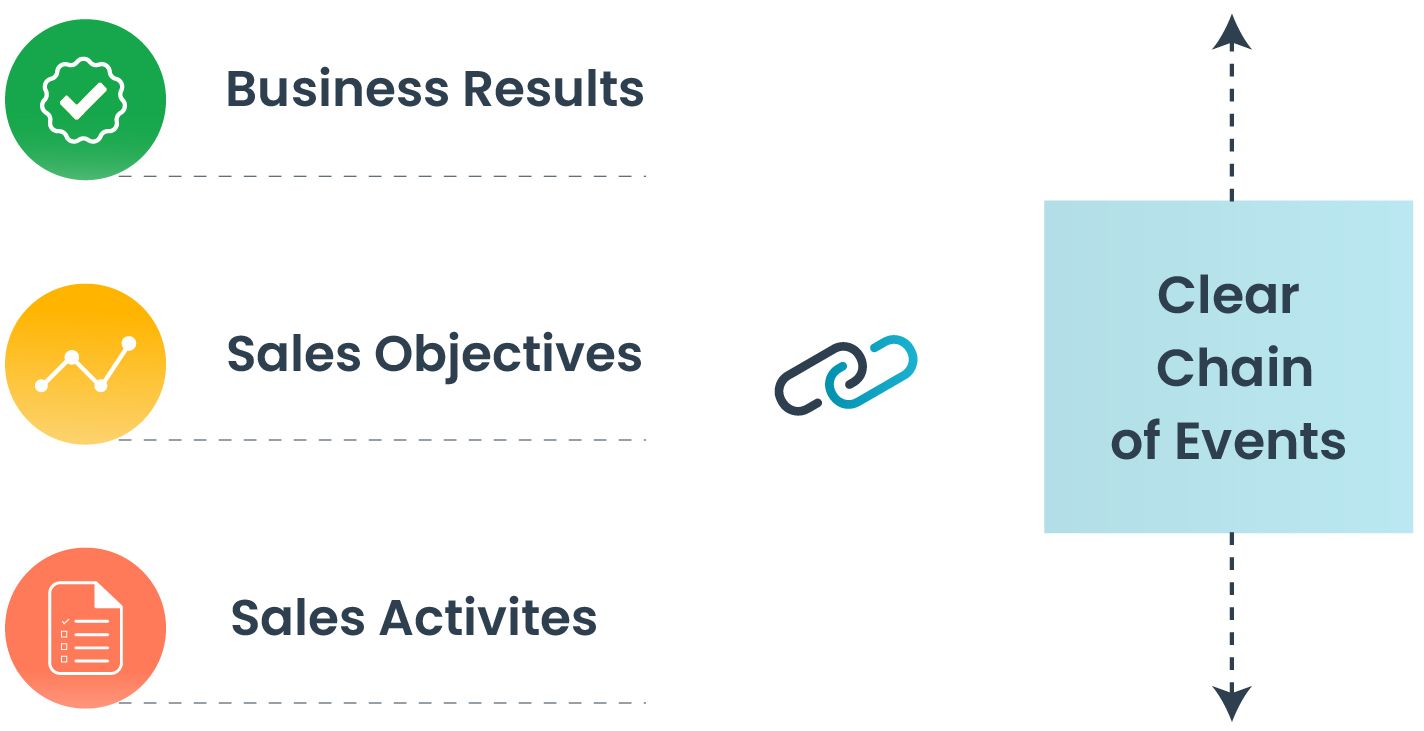
Based on the manageability of the sales metrics, the metrics were categorised into 3 types.
- Sales Activities: These sales metrics are highly manageable.
- Sales Objectives: These can be directly influenced by managing certain sales activities
- Business Results: These are completely unmanageable but can be influenced by managing sales activities and objectives.
The Activities (A) - Objectives (O) - Results (R) framework connects these sales performance metrics and establishes a casual relationship among unmanageable, influenceable, manageable metrics. In other words, smart sales activities drive sales objectives, which in turn drive business results. Hence, the sales activities can be determined by reverse engineering.
Here is one of the examples of AOR framework.
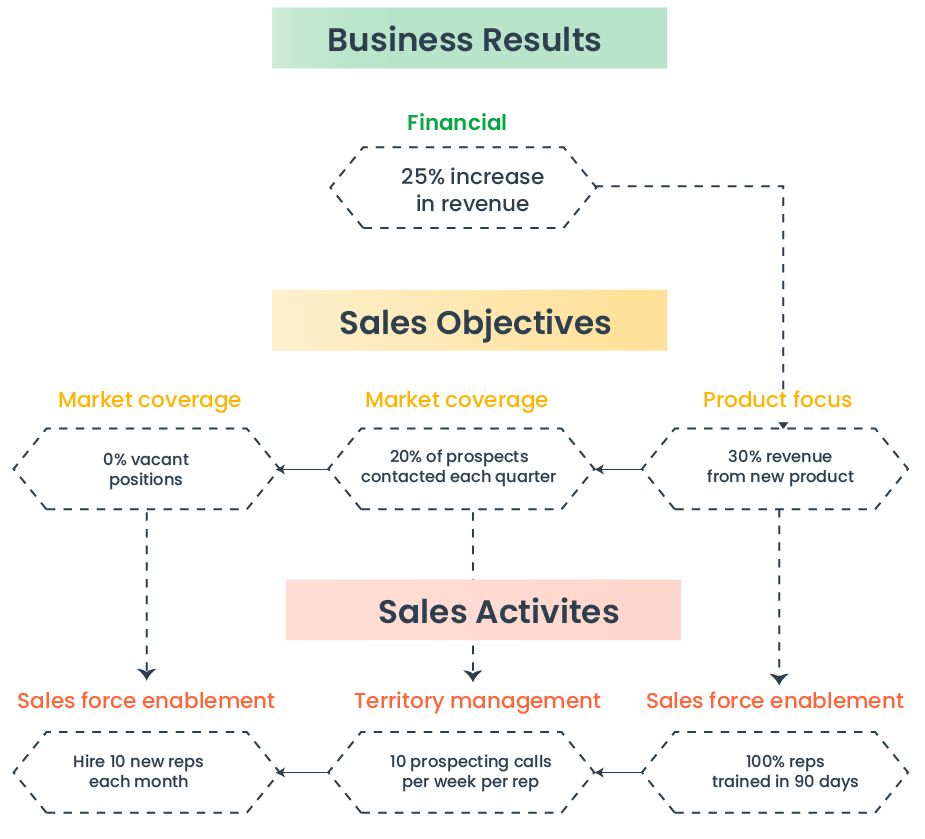
Business results
The business results are not controllable and are not manageable. However, the sales performance metrics associated with business results are determined by the achievement of specific sales objectives.
Business results metrics are divided into financial metrics, satisfaction metrics, and market share metrics.
- Financial metrics: An accounting-related measure of revenue or profit.
- Satisfaction: The customers’ and employees’ perception of a company overall or a specific aspect of the company’s products, services or relationships.
- Market share: Percentage of the targeted market opportunity that has been captured by the company.
Sales objectives
The sales objectives, being found in the middle of the spectrum of manageable and unmanageable, can’t be directly managed. However, they can be influenced by directing the day-to-day sales activities.
In other words, sales objectives help salesforce evolve from brute force, phone book-guided masses into efficient, strategically focused experts. They lead organisations down the most direct path to their business results by giving their salesforce the who, what, when, and where of selling.
The types of sales objectives metrics are categorised into:
- Market coverage: Ensure there is enough total selling effort to engage all desired customers and prospects.
- Salesforce capability: Ensure that salespeople are using their capacity effectively during their individual customer interactions.
- Customer focus: Ensure the salesforce is capturing, retaining, and growing the customers that the company wants to have.
- Product focus: Ensure the salesforce is selling the product and service that the company wants to sell.
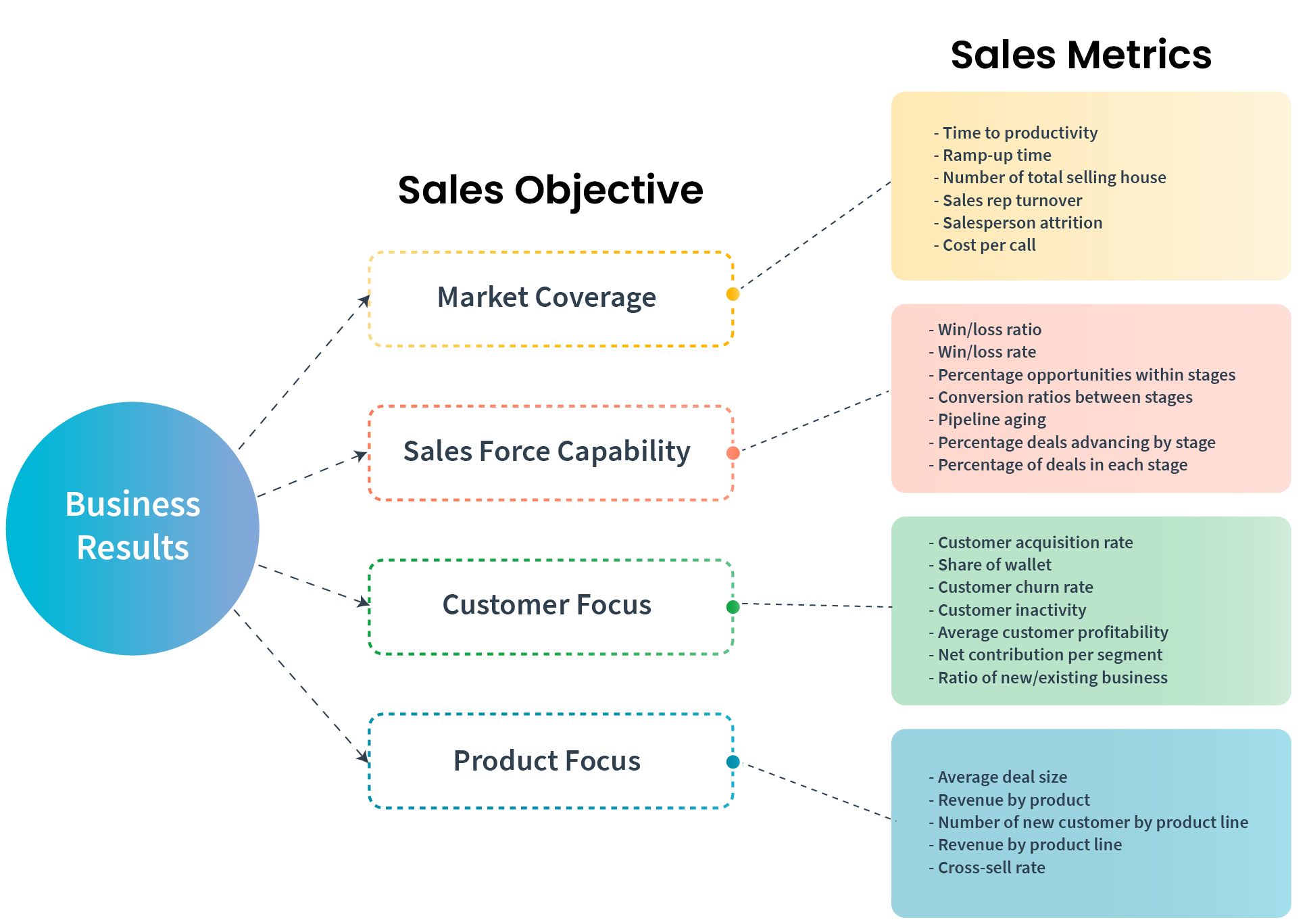
Sales activities:
Sales activities can be easily managed. However, the author has determined that there are several building blocks of day-to-day sales activities for sales processes and categorised them into five groups.
- Call Management: Call management is intended to improve the quality of sales calls that are made.
- Opportunity management: Opportunity management is used when a sales team must qualify, plan and analyze a single multistage sales pursuit.
- Account management: Account management’s objective is to increase revenue or to maximise the long-term value of a select group of customers.
- Territory management: Territory management is used when salespeople target customers based on a set of attributes or sales territory. A sales territory can be a defined industry, size or geography.
- Sales force enablement: Salesforce enablement activities are used to improve how salespeople do their job. In other words, salesforce enablement involves coaching, training, and resources to boost the capabilities of the salesforce.
Putting it all together
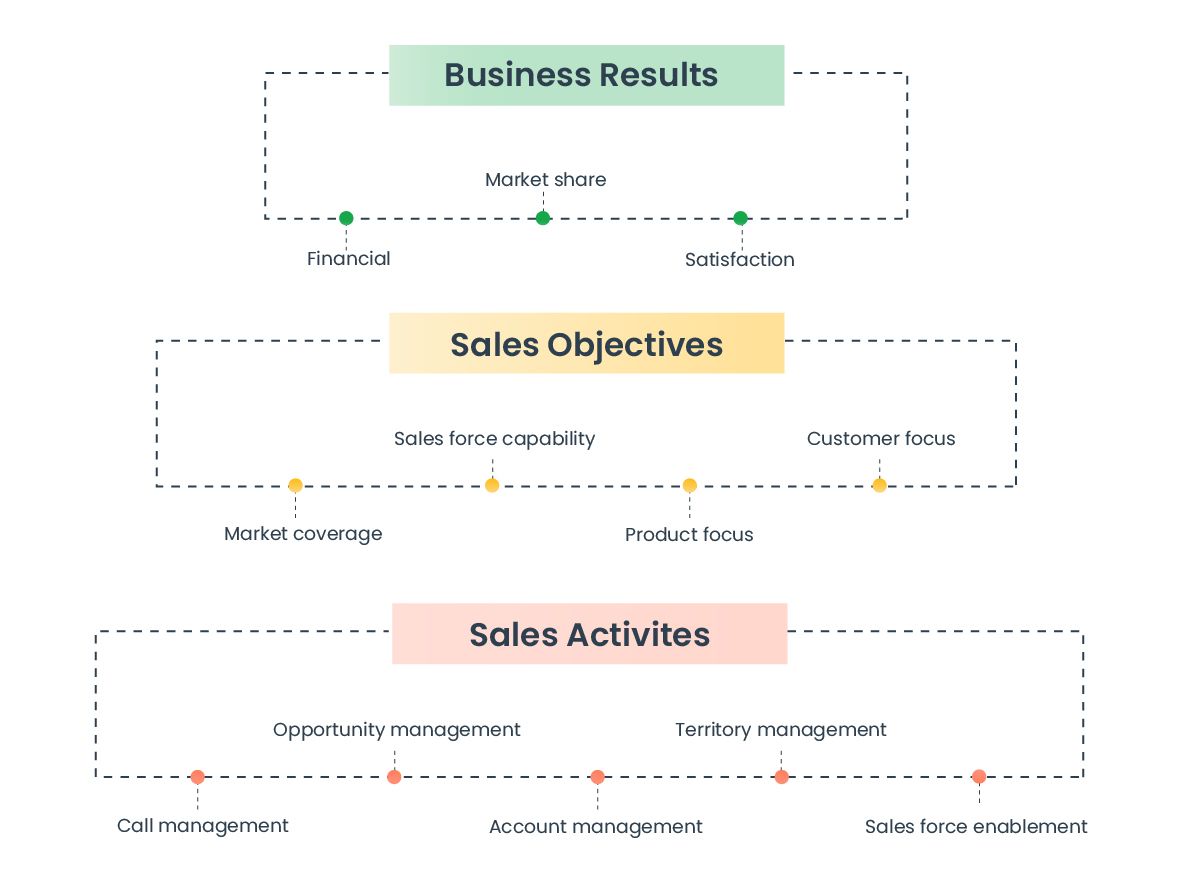
The author, Jason Jordan, has consistently emphasised the importance of the AOR framework throughout the book and connected the dots between sales activities, sales objectives, and business results. To make things clearer, here is a non-linear example to showcase the dependable links between activities, objectives, and results.
Six-Step Process
While Jordan’s analysis makes sense, the implementation may seem daunting. To help out the readers, he has also shared a simple 6-step process to crack the sales management code.
- Define the business results.
- Identify the sales objectives.
- Select processes that can directly influence your objectives.
- Choose activities within the processes to manage a day-to-day basis.
- Quantify the target for all chosen results, objectives, and activities.
- Manage.
The AOR framework and the prescribed sales management process steps provide a clear framework for a focused approach to achieving success in sales.
We hope you enjoyed the summary of the “Sales Management Code”.
If you want to enjoy reading more such book summaries, subscribe to our blog!




